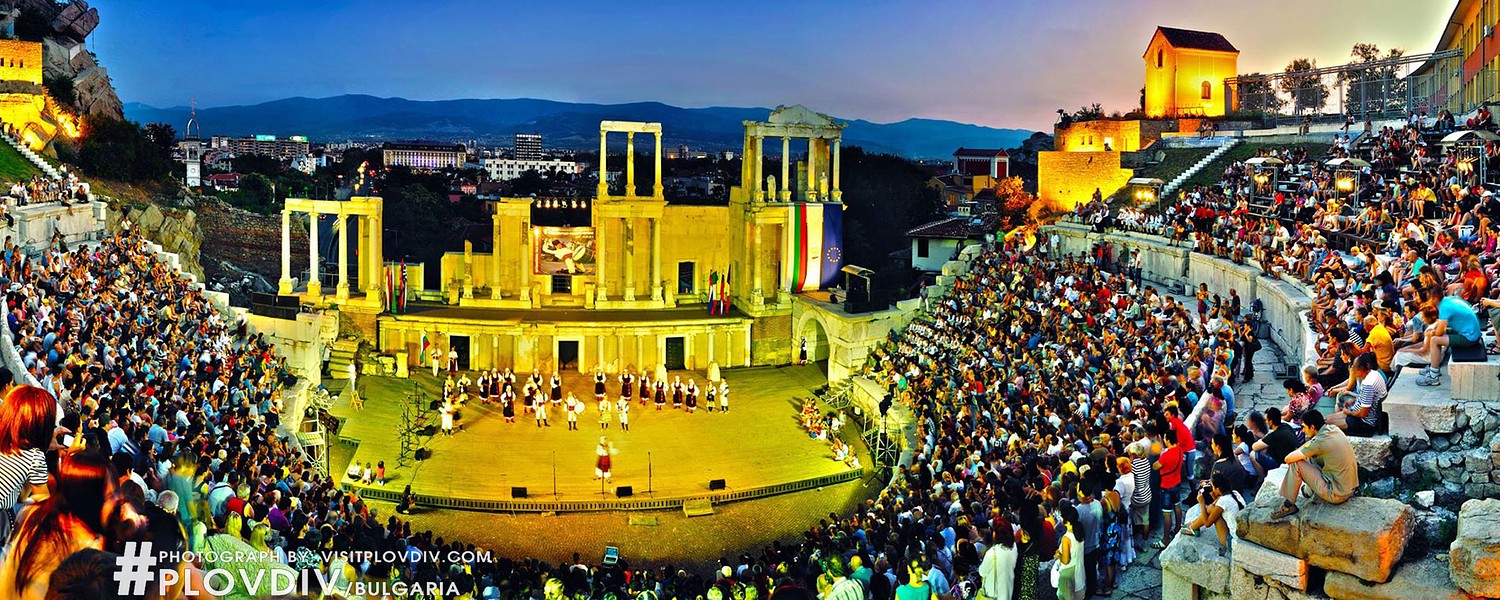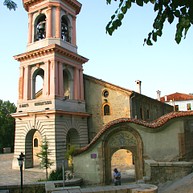At this place in the beginning of XIX century there was a dilapidated late medieval church, dedicated to St. Dimitar of Solun the Thaumaturgus. Funds for the continuation of the construction were donated by wealthy Plovdiv citizens Ivan Politoglu, Valko and Stoyan Teodorovich Chalakovi, Stoyan Kurtovic Chalakov, Iskro Kesyakov, Todor Valkovich, and others. Anton Kamizopulos, merchant of Greek origin in Moscow, born in Plovdiv, donated valuable church-plates for the ordinance of the altar: Four Gospel, decorated with fittings, censers and vestments for the priests.Probably the temple was built by the famous master from Bratsigovo Stoyu Ivanov.
Most impressive is the marble iconostasis, the only monument of its kind in our Revival art. It was created in 1860-1869, by Adrianople and local masons, led by Greek artist A. Calumen. The funds for the expensive and impressive iconostasis were donated by the prominent resident of the parish, Ivan G. Politoglu.
The yard of the St. Dimitar temple is surrounded by high stone walls. In the western part there is the small chapel-holy spring, dedicated to the martyrs St. Kirik and Julita. In the north side of the narthex is the belfry, built in the ‘80s of XIX century by architect Joseph Shniter’s design. The single storey building of the sexton’s house fits snugly to the southern fence wall. Next to the chapel, built on the high retaining wall, is the old priest’s home.
Read more





















